Read about Slovakian Andrej Polcic's fascination with the strong rainbow trout in his home rivers
In the last two years I slowly started to realize, that my decisions regarding the choice where to go fishing and what kind of fish I should target, tended towards waters, which hold big rainbow trout.
While fly fishing for wild brown trout and grayling on remote high mountain rivers in Slovakia remains my most favorite fly-fishing occupation, my attraction toward big rainbow trout and especially their trophy specimen became stronger and stronger in recent years.
After spending a couple of hundred Euros on fishing licenses, and driving uncountable miles to these trophy waters last year, I had to admit – even trying to stay objective and cool – that there was a certain passion forming in my fly fishing life. A passion, which had the aim of outsmarting this fish, the fastest freshwater fish in the world.
As the philosopher par excellence Aristoteles said: „True wisdom consists in the knowledge of causes”. So, I searched for the causes for my fascination with these fighting machines, and came to following conclusions.
Cause no.1
I made my first experience with big rainbows in New Zealand, where I spent four years guiding and fly-fishing rivers on the South Island. Back then it was the big brown trout, which was the reason for my interest in New Zealand.
It was on a small river in the highlands of Central Otago, where I encountered one rainbow trout, which almost drove me to despair with its strength and cunning. I managed to outsmart him twice and bring him to take my fly. I lifted the flyrod and was able to hook the trout perfectly. The fight began and I was immediately taken by surprise by the power and resistance of this rainbow trout. It felt like arm wrestling with an adult man. It was the rainbow trout, which was dictating our confrontation and both times managed to take cover in his hiding spot under the riverbank. Using such an enormous strength, he broke my quite strong leader on my first attempt, and then straightened my robust Tiemco hook nr. 14, as I tried to land him on a following occasion.
It was this experience, which started my fascination with big rainbow trout. Eventually, I was able to land the fighting machine on the third day and third attempt. Using even stronger tippet and more robust hook, running about 100 meters downstream through the river and finally netted the fish with my friend's help.
All of this happened 9 years ago and is well documented in this short video.
Cause no.2
2014 was the last year of my adventure with huge New Zealand trout. Fly fishing and guiding in my homeland Slovakia became my full time occupation. I started to focus on native, wild brown trout and grayling in the remote, untouched high mountains of Slovakia.
At that time, I could not even dream about experiencing the same cunning, strength and escape art of huge rainbow trout on my Slovakian rivers, streams and lakes.
How was it possible and how did it come about? It was around the same time, I was living and fly fishing in New Zealand, when a few Slovak fishing associations began with realization of the trophy waters idea. These rivers became hot spots and top destinations for big graylings, brown trout and especially extremely strong rainbow trout.
I realized that some of these Slovak rivers not only hold rainbow trout similar in size and number of those in New Zealand, but even surpass them in quantity and quality.
Cause no.3
It was on nice sunny summer day in the year 2017, when my two fly fishing colleges and I were on our way back home from our fishing adventure on one of the many beautiful high mountain rivers of Slovakia. My friends Miro and Jaro suggested that we went and had a look at one of these trophy rivers. It was not far away from our route home anyway, so I agreed. I must admit, that I was initially suspicious, when listening their stories about huge rainbow and brown trout.
When we arrived at the river, Miro and Jaro hurried to one pool, where they wanted to show me some of those big trout. The water was crystal clear, so wearing Polaroid sunglasses it was no problem to spot some fish.
By my first look at the river I was amazed by seeing the fish swimming and feeding just at the outflow of one big pool. I couldn't believe my own eyes and was shocked by the size of these monster rainbow trout.
Miro and Jaro were also speechless, after I showed them the spot, where this trophy fish was evidently feeding on small duns. I have seen a lot of big trout in New Zealand, but never a trout of such size.
It was the biggest rainbow trout I have ever seen in person. Similar maybe to rainbow trout in Jurassic Lake in Patagonia, or those in Twizel river-channel in New Zealand, where specimen over 10 kilos are being caught. We estimated the size of this trout to be approximately 1 meter (40 inches) in length and its weight nearly 10 kilos (22 lbs.).
Unfortunately, we did not have the fishing permit for this trophy stretch and thus were not allowed to fish there, and to try our luck to catch that huge trout. By staring at this massive fish my passion for trophy rainbow trout was ignited again, in spite of being almost quenched for years.
Cause no.4
Almost one whole year went by, till I could satisfy my anew inflamed passion for big rainbow on my homeland rivers in Slovakia.
It was once again on beautiful sunny summer day in July of 2018, when me together with my old fishing buddy Jaro headed towards the trophy river, which we visited one year ago and where we spotted that monster rainbow trout.
Our first steps went to the bridge, from where we tried to spot some trout. We couldn’t spot any fish because of the hot weather, which made the fish to hide in deeper parts of the river.
Nonetheless we waded in the water under the bridge and tried began to fish. Jaro decided to go for French nymphing method, which is very popular among the European fly fishermen, but was not efficient under these hot weather circumstances.
I was still standing on the riverbank and observed plentiful grasshoppers jumping around very close to the water. Suddenly I remembered the New Zealand trout and their feeding behavior during hot sunny days. In New Zealand I used the cicadas and other bugs as terrestrial insect imitations. This tactic brought me a lot of nice fish there, and might also work here in Slovakia. Instead of cicadas I went for big grasshopper imitation, with which I used to experiment a lot on Slovak rivers and streams with good success. I even wrote a report about this technique and tactic here on the Global FlyFisher. https://globalflyfisher.com/reports/grasshopper-valley
A three meter long leader with a self-tied hopper fly and the light and short 7 feet class 5 rod delivered my hopper blindly into very deep, fast flowing river stretch. I also tried to give the fly more attraction with short and fast movements of my rod tip. Then after few blind casts I spotted a dark shadow following my big swimming hopper. The trout was raising slowly and gracefully to the surface despite the strong current.
I experienced another flashback when observing the rainbow trout taking and swallowing my fly.
It was again a lesson from New Zealand, where I learned not to strike and lift too soon while dry fly fishing for big trout. Kiwi fly fishermen have unwritten law, which goes something like this: you shouldn't lift the rod after the fish has taken the dry fly, before you can say “God save the Queen”.
So, I waited and then set the hook.
What followed was something I did not expect. I was aware of the enormous strength with which rainbow trout fought in New Zealand. But pulling the line and aggressive fighting of my first big Slovak rainbow trout was even more vehement. Immediately after I set the hook, the trout shot upstream, swimming against the strong current like a hot knife cutting soft butter. Thank God, my reel brake was optimally adjusted and was able to smoothly release the whole line together with 20 meters of backing. Both the reel brake and the line cutting through surface were contesting in giving the highest sound.
I was left with no other choice but to follow this fighting machine with a lot of effort against the current. Trying to escape, the trout was using all kinds of jumping techniques. After almost ten minutes the fight was over, and I could land this beautiful male rainbow. It was about 60 centimeters (24”), but fought like much bigger fish. This Slovak rainbow trout was for sure the strongest fighting freshwater fish, I have ever encountered, considering its size.
I was wondering if it was just coincidence that my first big rainbow trout in Slovakia was such a strong fighter. It turned out that also all other rainbow trout I caught on that day were extremely strong. For the first time in my fly fishing life I was exhausted and had intense pain in my right wrist from fighting these incredibly powerful fish.
Since this painful, but fascinating fishing experience, I started to call the fishing on Slovak trophy waters “hard core fly fishing”.
But it still wasn't the highlight of the day. On our way to car we stopped on the bridge again, from where we had tried to spot some fish at the beginning of our fly-fishing day. What we saw is best expressed with following words of my friend Jaro: ”Andrej, look, a taimen!” I looked and saw a giant fish, but it wasn't taimen (the biggest salmonid species on earth). What we were observing was an enormous rainbow trout, which was even bigger than the one we saw one year ago. A record rainbow trout was swimming and actively feeding just a few meters below us. Unlike last year, this time we had fishing permits and thus were able to use this unique possibility, to try to catch the fish of a lifetime.
The question was: how we should catch trout of this sort, when rainbow trout between 50 and 60 centimeters were already so strong that they challenged not only our fly-fishing equipment, but also our physical possibilities?
The other question was: how it is possible to catch such an experienced fish, which had even been given its own name by local fishermen?
My experience with catching big trout in New Zealand was once again very helpful under these circumstances.
It is a great advantage to have someone who can act as a spotter. The spotter is responsible for the precise navigation of fisherman, and helps him significantly in adjusting the direction and length of the fly presentation. This is especially the case when the active fly fisherman cannot see the feeding fish himself.
The same is also true for lifting the rod and setting the hook at the right time, since the spotter can better observe the fish taking the fly, and gives his fishing colleague a sign to strike – mostly through a loud yell: “LIFT!”
The only problem was that my friend Jaro had no experience at all with this kind of sight fishing tactic. Jaro took his position after my short explanation, and I prepared the leader with my flies.
It was obvious that this monster rainbow trout wasn’t feeding in the surface, hence I tried my luck with a hopper-dropper system. This fly-fishing technique uses two flies. The floating dry fly acts as strike indicator and the other one is presented under the surface as the main fly. This system enables long casting with precise fly presentation to a subsurface feeding fish.
I waded slowly and cautiously to the optimal spot in the river and waited for Jaro’s instructions. Blinded by the sun, I was not able to see the feeding record trout at all. Nor could I accurately observe my strike-indicator drifting on the surface from where I was.
Despite all that, I made the first cast according to Jaro's instructions, and tried my best to present the fly as naturally as possible via a dead drift.
From now on I had to fully rely on Jaro, but nonetheless still made effort to somehow observe the floating hopper on the glittering water. My flies were slowly drifting towards the spot where the huge trout was swimming.
Since I heard nothing from Jaro, I assumed, that the trout did not see my fly or ignored it and wanted to my flies again.
Suddenly the hopper moved unnaturally to the side, but still no strike-sign from Jaro. I instinctively lifted my rod and saw huge waves a from fleeing trout underneath my hopper pattern, but the trout of my lifetime wasn’t hooked. Only afterwards did I hear Jaro calling out loud: “she took your nymph”. I missed the strike just by tenths of seconds and lost the chance to fight and to catch my record rainbow trout.
It was the biggest disappointment of my fly-fishing career. I couldn't blame Jaro for this misfortune because I was aware of the fact that he had never acted as a spotter before. Anyway, this story became a great opportunity for me to tease him, especially during our beer drinking sessions after fishing adventures.
Later I realized that I had already experienced a very similar situation before in New Zealand. There was a bridge in the rain forest on the South Island, and under this bridge swam a record fish. It wasn't a rainbow, but a huge king salmon, comparable in its size to my missed Slovak monster. This New Zealand king salmon is to this day my biggest fish caught with fly rod.
The reason why I am mentioning my record New Zealand salmon at this point, is to illustrate to you the size of my lost trophy Slovak rainbow. I am using this king salmon as a comparison because I have no evidence - photo or video - of that missed rainbow trout.
But my record freshwater fish from New Zealand was quite well documented thanks to my brother Peter and our friend Bruno, which enables me to try to explain to you, by means of the following photos, my disappointment of loosing that record trout back home.
If I had caught the huge rainbow, its measures would probably have been as follows: length 120 centimeters (47”) and a weight between 15 and 20 kilograms (33-44 lbs.).
My fascination with trophy rainbows became even stronger after this experience, and the hope of catching this kind of record fish sometime in the future accompanies me whenever I visit these Slovak trophy waters.
Cause no.5
Oftentimes I am confronted with people criticizing the presence of rainbow trout in Europe, which is being mostly expressed in the following arguments:
Argument no.1: Rainbow trout is not a native fish to Europe, and therefore should not be introduced in our rivers, streams and lakes.
My counterargument: Why are then New Zealand and Patagonia some of the top fly-fishing destinations in the world? Their rivers wouldn't be interesting for fly fishermen across the world without the introduced brown trout, rainbow trout and other salmonids. And the same is true for whole southern hemisphere, where none of these fish species are native or originated from.
Argument no.2: Rainbow trout is serious competition for native fish like brown trout and grayling driving them out of their habitat.
My counterargument: From years of experience and observation I found out that the rainbow trout - in contrast to brown trout and grayling - prefers very specific sections of water, and even if they all share one pool, they do so mostly in symbioses. Oftentimes I caught all three of these salmonid species in one pool. Not only in big rivers but also in small high mountain streams.
Argument no.3: Rainbow trout is not a very clever fish, taking any kind of bait and thus easy to catch. Therefore, not of interest for ambitious fly fishermen.
My counterargument: The above expressed opinion might be true for those rainbow trout, which have been introduced and spent only a short time in their new wild environment. But this applies to all other salmonid species too.
Once the rainbow trout spends a longer time in the wild, natural habitat of rivers, streams and lakes, it becomes one of the most cunning and difficult fish to catch. It is especially true in case of trophy specimens. These facts are the reason why I appreciate fly fishing for them even more.
The selective feeding behavior of rainbow trout can offer a steep learning process for every fly fisherman, who is patiently willing to observe and study their activity. All of this can lead you to become a much better fly fisher.
Cause no.6
Maybe the simplest but the more explicit cause for my fascination with rainbows is the surprised face expressions and comments of my fly-fishing friends and customers while experiencing the cunning, strength and beauty of these fascinating fish.
This euphoria and the laughing faces of my fly-fishing mates is priceless, and therefore the most important reason why I spend so much time on Slovakian trophy waters in search for the big rainbow trout.
During the recent years Slovakia has become a fly fishing destination, where fly fishermen from all over the world have a great opportunity to catch the fish of their lifetime.
Maybe this year I will succeed in catching the record rainbow trout. If this will be the case, I will surely write a report about it and let you know.
I wish you all successful fly-fishing in the future, and should you be interested in huge rainbows then you know that you don't have to fly across the world to be able to catch your trophy.
- Log in to post comments

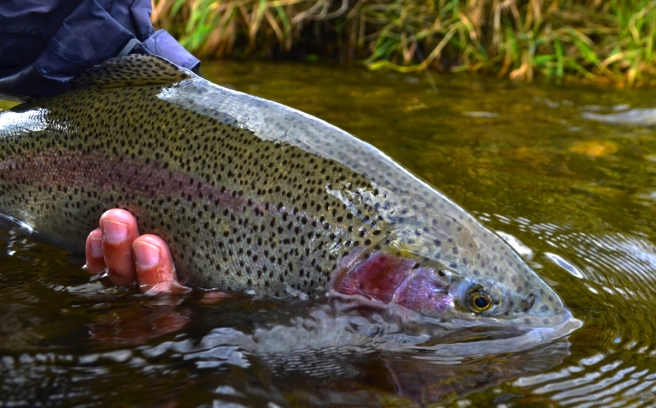
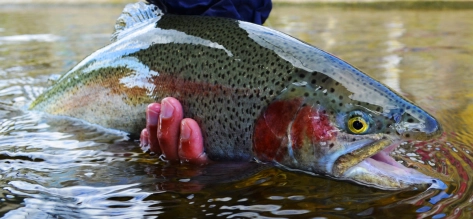
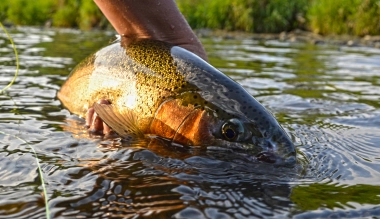

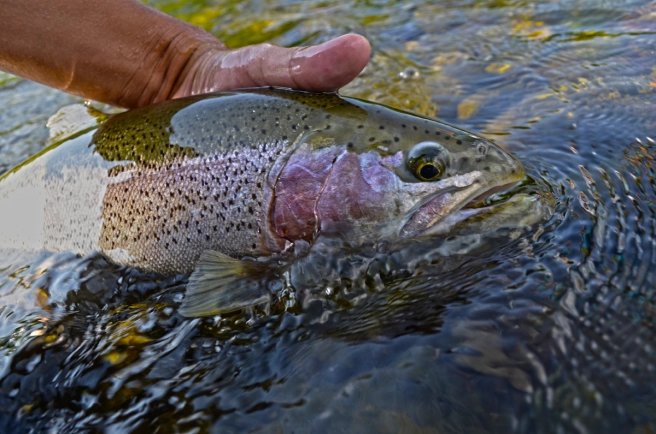
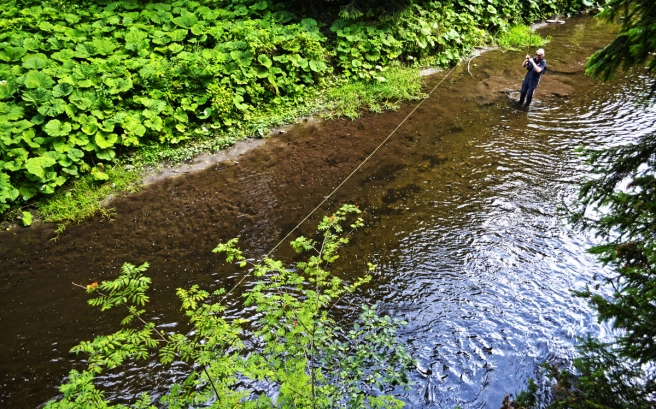
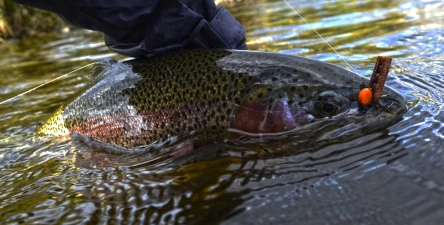

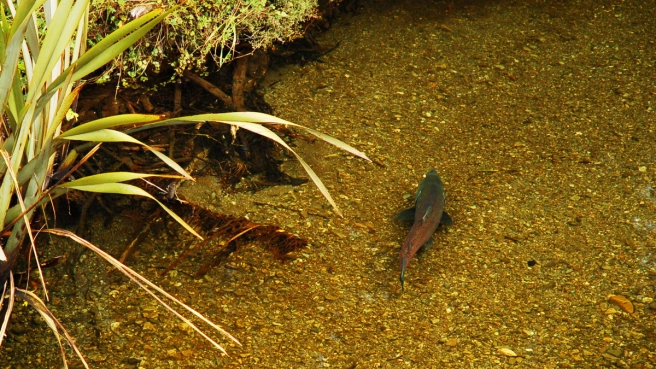
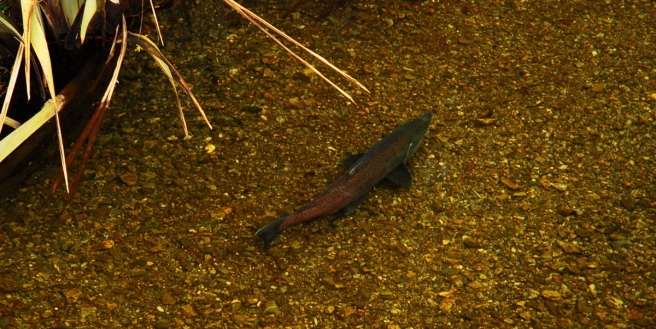
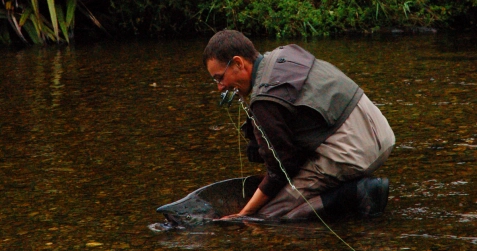
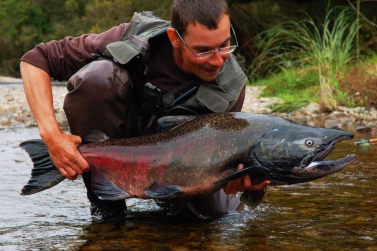
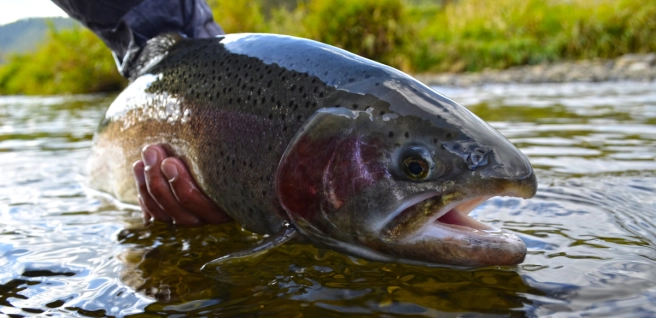
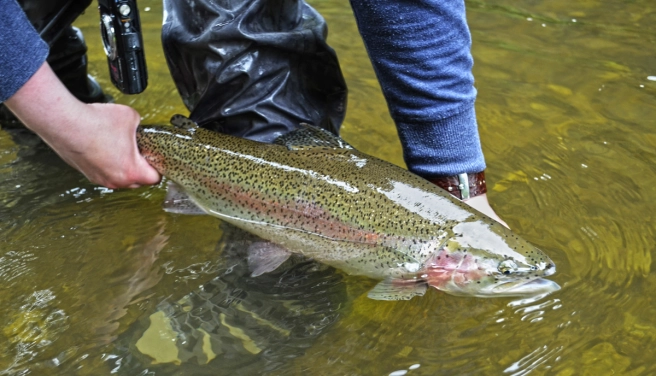

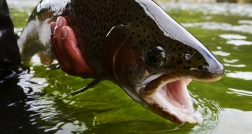





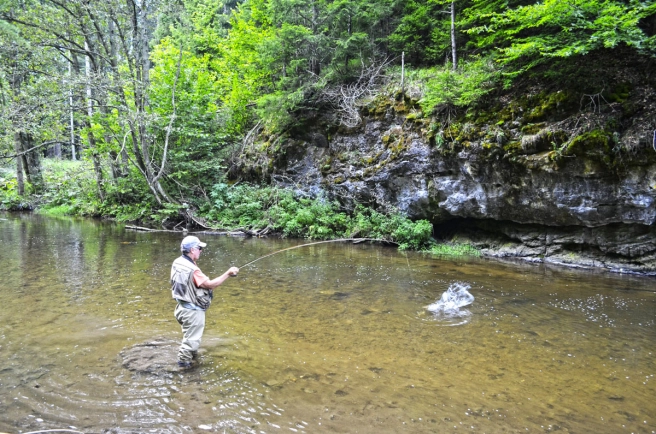
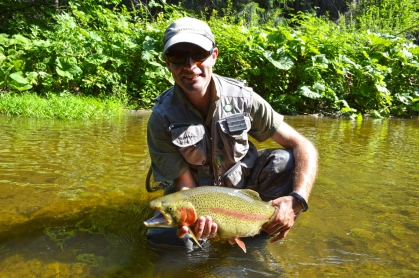
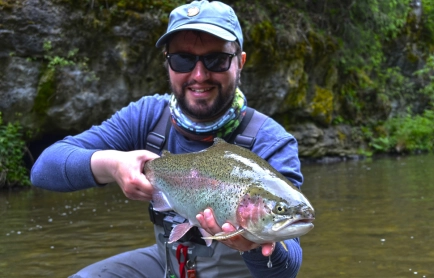
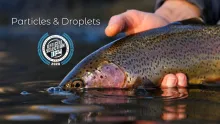

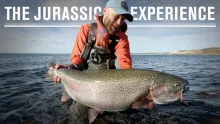


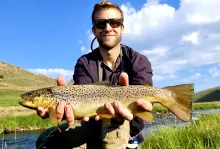

I admit that fly fishing is
I admit that fly fishing is an extremely interesting and addictive hobby and the passion of those who practice it shows us the wide range of people's creativity. But what is the essence of this occupation that fascinates all practitioners is to trick a fish into grabbing an artificial creation, in many cases a creation of their own hands. It is a long process that begins in front of the vise and ends with the catching of an artificial fly by a fish. The road to the tackes is and must remain the ultimate pleasure.
That I can explain and understand many of people's obsessive fixations, which can sometimes lead to bigotry, does not exclude the fact that fanatics generally lack balance in their personal lives. But in many cases, it is a fanaticism disguised by the interest for economic gain and then the "passion" is the subject of a well-argued exposure in the public space. A marketing (which we already know very well how much truth it contains) to attract attention and capture the interest of those who have the opportunity to finance a fad. Now that it's a Swiss watch that costs as much as a house for ordinary people, a special car brand, an exclusive wine bottle, a smart phone dressed in svarowschi crystals or diamonds, a yacht ... or a trophy fish , it doesn't really matter.
Dear confreres, keep fly fishing simple, enjoy the road to the tackings and the creation process. Not to mention that just being on the edge of a gin clear river in the middle of a wonderful nature is a blessing. As in many other human activities, size does not matter. A trophy fish is in many cases a matter of personal interpretation. For me, for example, it can be a 0.500g chub in a 3m wide stream, which I fallow for hours, sometimes days, so that in the end I manage to trick him into taking the fly presented with a # 1 -2 fly fishing rod, or a 1-2kg sea trout parked in a Scandinavian pool, almost impossible to approach with a fishing rod. The more complicated the situation, the greater the desire to overcome all obstacles. Greetings to all of you. Pierre